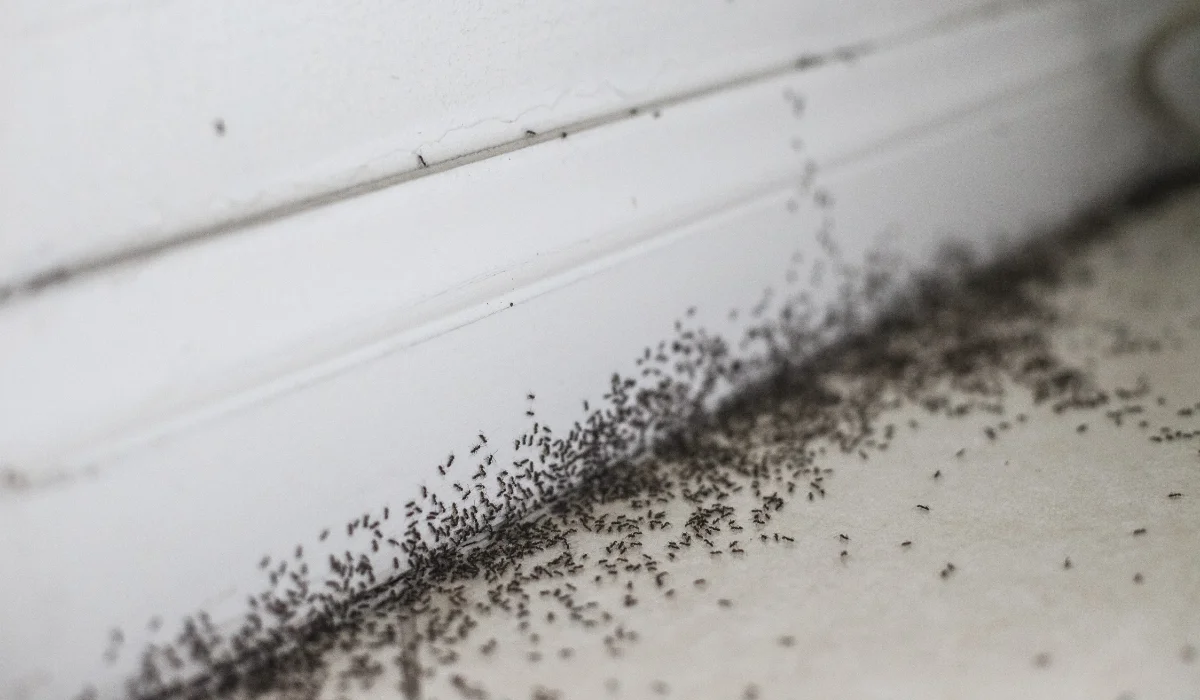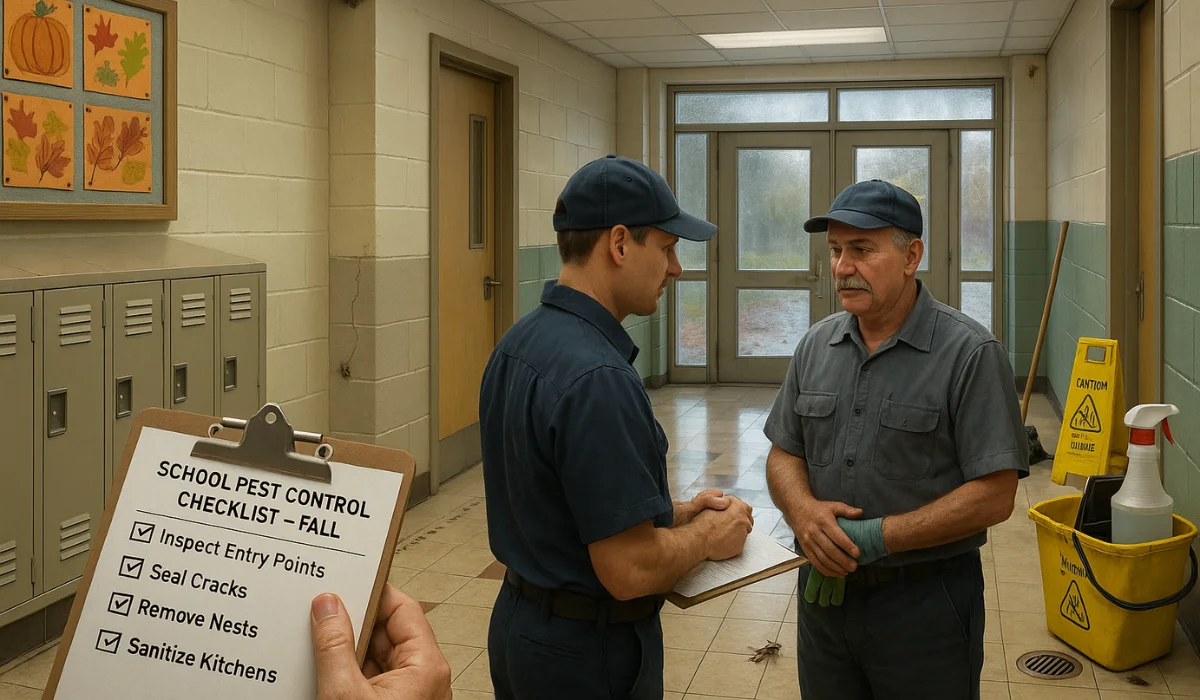Spotting a line of ants marching through your kitchen is never a good sign. Here in Louisiana, our warm, humid climate means ants are active year-round, especially in kitchens where they can find food, water, and shelter.
For many homeowners in places like Baton Rouge or Houma, a trail of ants is often the first warning of a bigger infestation brewing behind walls or under floors. Let’s talk about why ants show up, what types of ants you might be dealing with, and how to handle the ant infestation before it spreads.
Key Takeaways
• Ants leave behind scent trails using their antennae to help others find food sources in your home.
• Kitchens attract sugar ants, crazy ants, ghost ants, and even red imported fire ants.
• Sealing entry points and using targeted ant bait can help get rid of ants effectively.
• Persistent or severe cases often require professional pest control services.
Why Ants Are in Your Kitchen
Ants aren’t just wandering in; they’re following a scent trail. Once a worker ant finds crumbs, grease, or moisture, it lays a chemical trail for the rest of the ant colonies to follow. That’s how a few ants quickly turn into a full infestation.
Here in Louisiana, kitchens are a favorite target because the climate helps ants thrive indoors. You might even notice activity increasing after heavy rain or drought, when ants like fire ants or carpenter ants seek dry shelter.
Common Types of Ants in Louisiana Kitchens
Understanding the species of ants in your kitchen helps determine the proper treatment. Here are some of the most common:
Sugar Ants
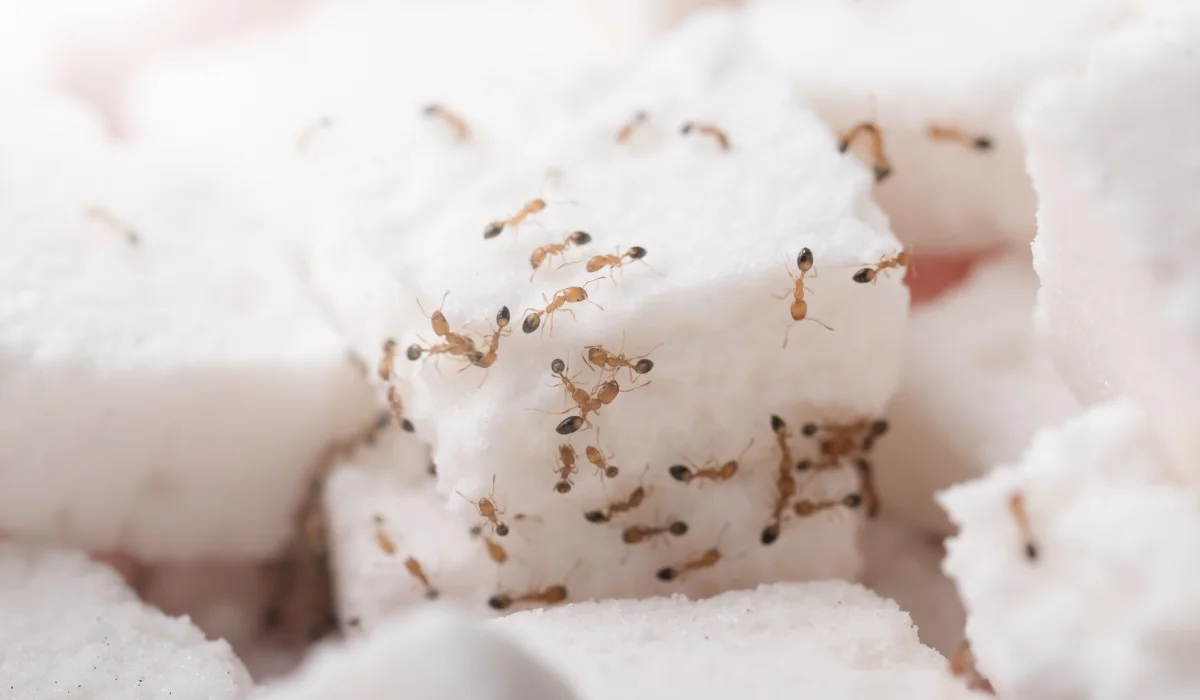
Often used to describe tiny ants looking for sweets, sugar ants may include pharaoh ants, odorous house ants, ghost ants, and little black ants. These ants are small, fast, and incredibly persistent.
Crazy Ants
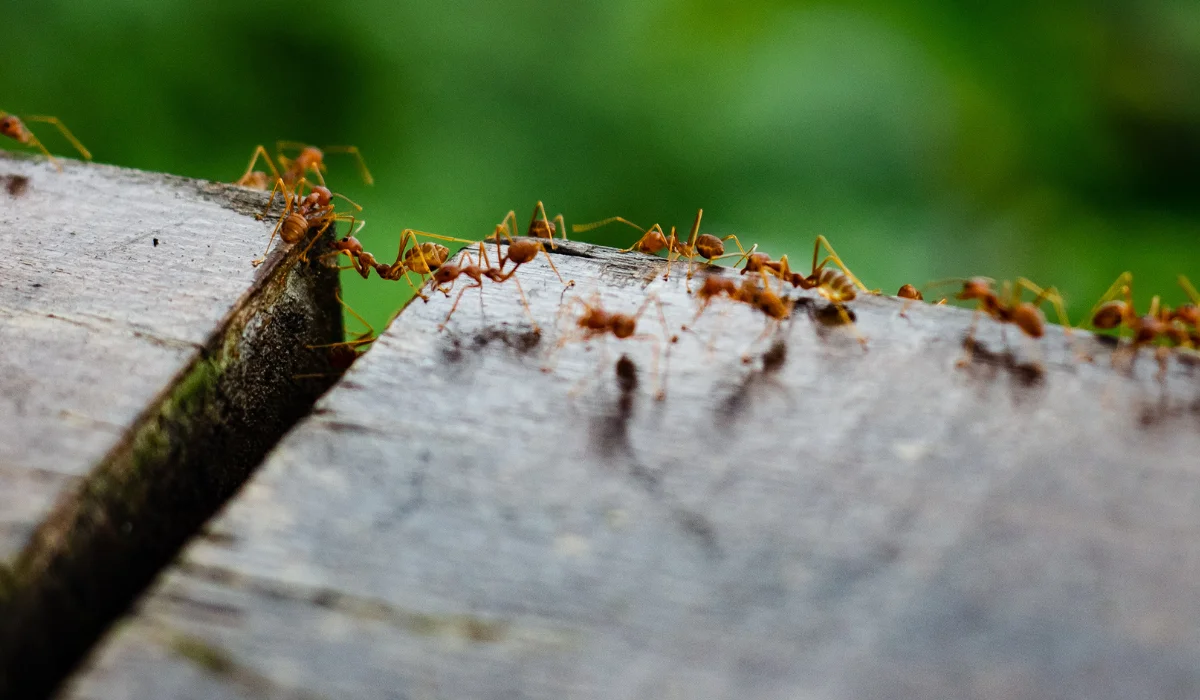
Crazy ants don’t move in straight lines, making their trails harder to spot. They’re also known to infest electronics and are resistant to many types of pesticides.
Red Imported Fire Ants
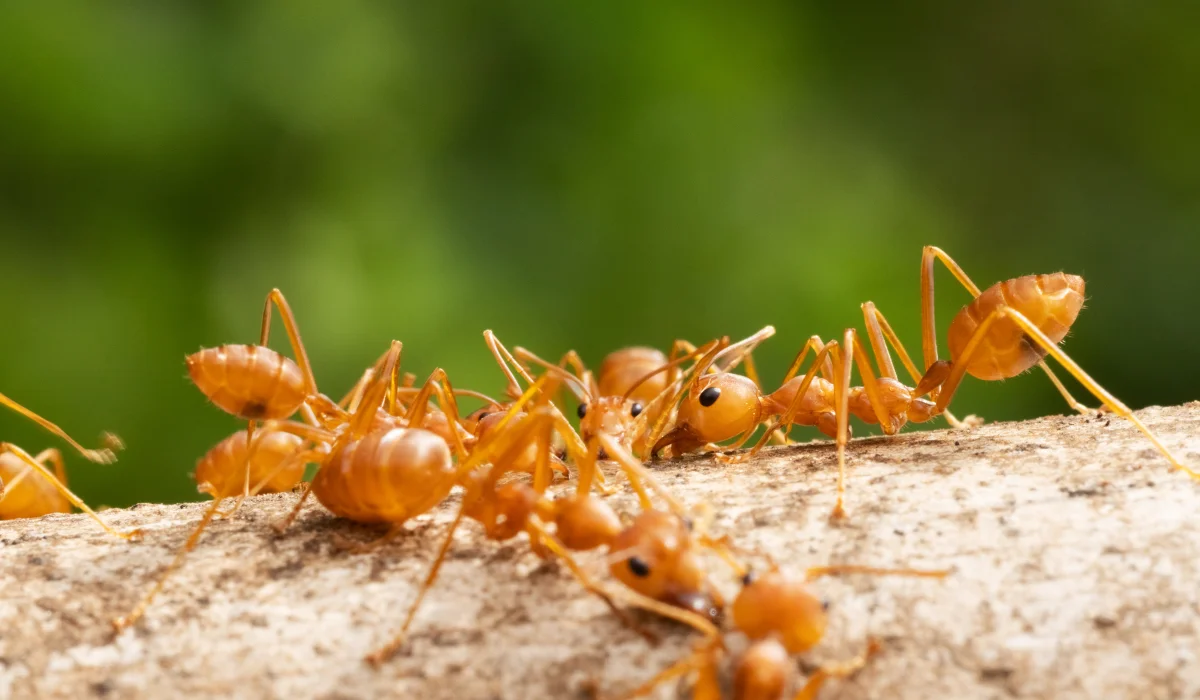
These aggressive ants often nest outside but will come inside during floods or dry spells. They’re reddish-brown, build large colonies, and their sting packs a punch.
Carpenter Ants
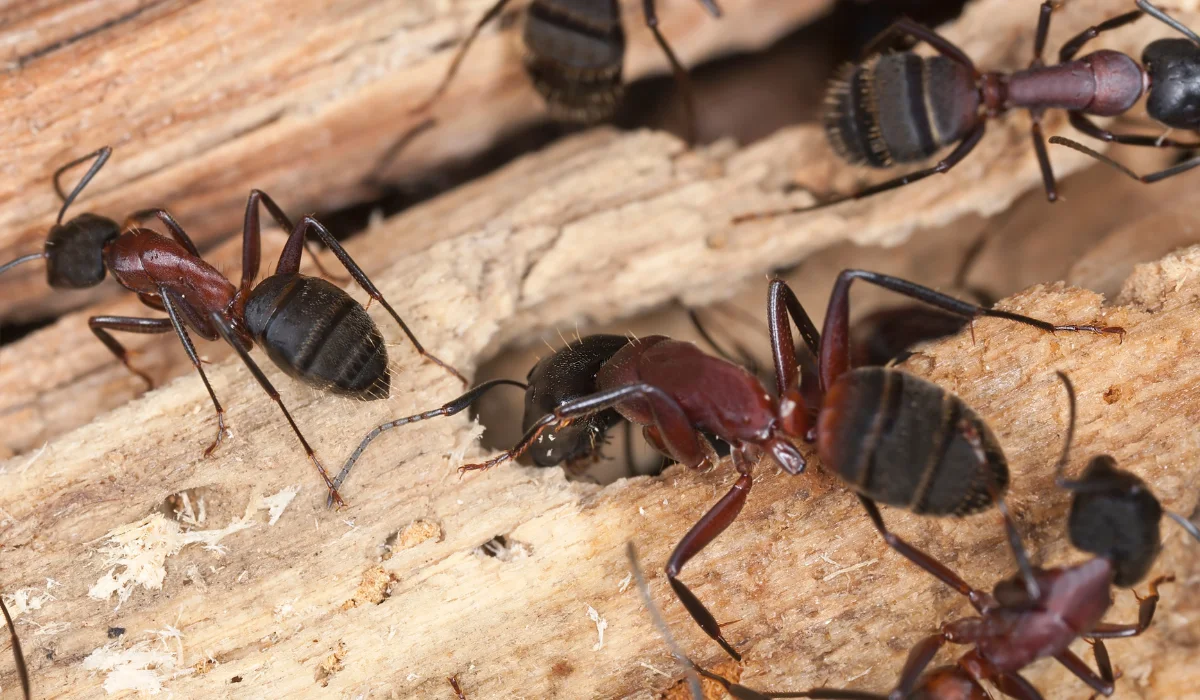
While they don’t eat wood like termites, carpenter ants tunnel through it to build nests. Indoors, they’ll go after protein or sweet foods.
Other Ants to Watch For
• Argentine ants: invasive and form supercolonies.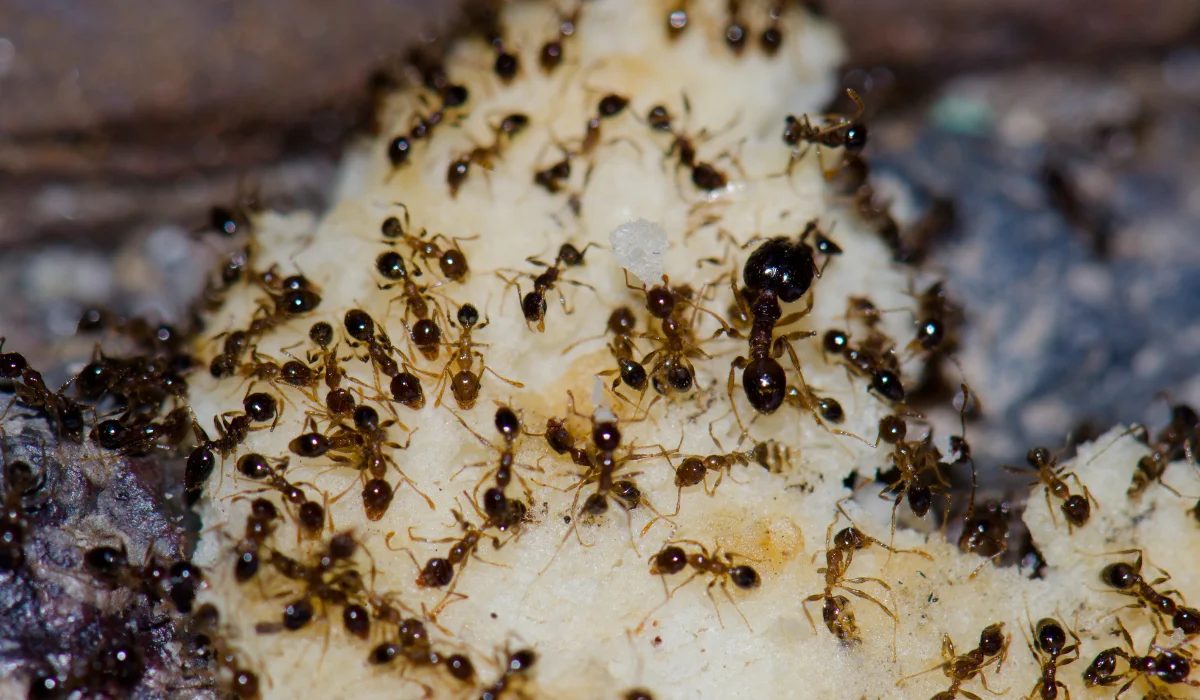
• Pavement ants: nest under slabs and enter homes through cracks.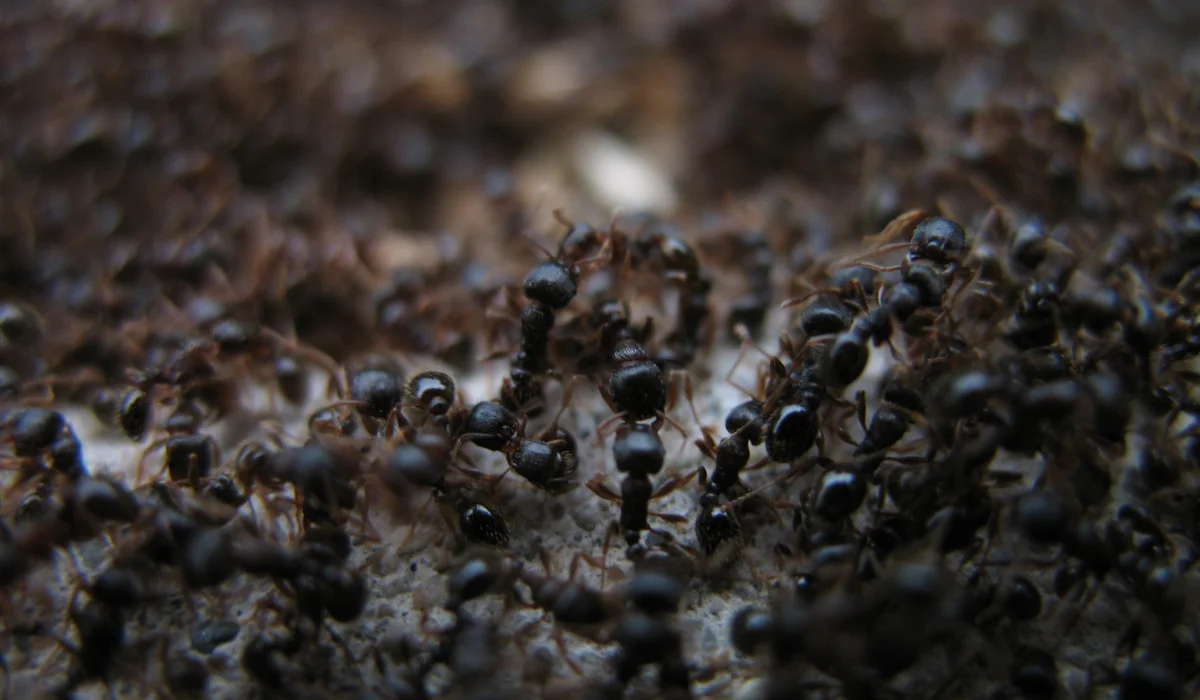
• Pharaoh ants: hard to control and often split colonies when disturbed.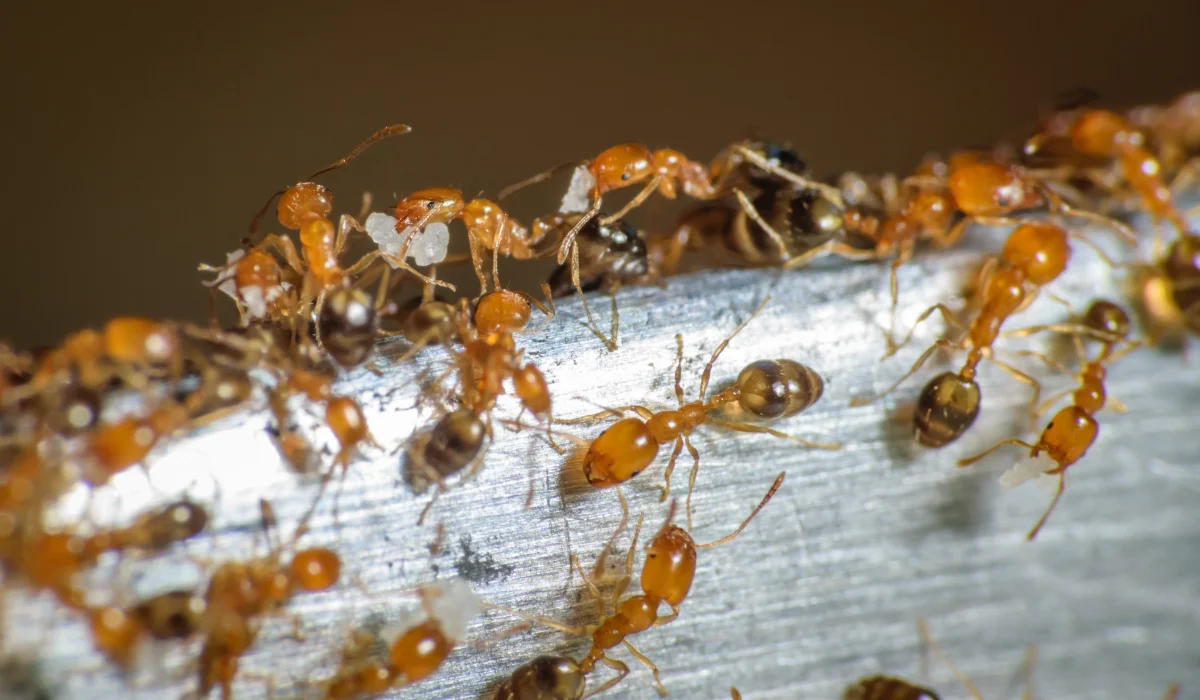
How to Get Rid of Ant Trails in the Kitchen
Step 1: Eliminate Food Sources
Ants are resourceful, but they’ll leave if there’s no food around. Wipe counters, sweep floors, and store all pantry items in sealed containers. Clean up spills immediately, even water.
Step 2: Use Ant Bait, Not Spray
Foraging ants carry bait back to the nest, helping wipe out the colony by poisoning it from within. Choose bait based on what the ants are eating: sweet or protein-based. Avoid using over-the-counter insecticide sprays that can cause the colony to scatter or “bud” into multiple nests.
Step 3: Seal Entry Points and Crevices
Look around windows, doors, plumbing, and electrical lines for tiny entry points or crevices. Seal these up with caulk. In older homes across Baton Rouge and Thibodaux, gaps can develop as foundations shift, so recheck periodically.
Step 4: Try Diatomaceous Earth
Diatomaceous earth is a natural product that scrapes away the waxy coating on an insect’s exoskeleton. It’s effective around baseboards and behind appliances, but must remain dry to work.
Step 5: Inspect for Large Colonies
Crazy ants and red imported fire ants often form large colonies that extend behind walls and into the yard. You may notice activity near the sink, in cabinets, or around outlets.
When Home Remedies Don’t Work
If you’ve used ant bait and essential oils, cleaned up every crumb, and still see trails, the ant problem might be deeper than you can see. Some species of ants have multiple queens and branch into satellite nests when threatened.
How to Prevent Future Infestations
Prevention is key to long-term ant control. Here are a few tips:
• Don’t leave pet food out overnight.
• Rinse recyclables before storing them.
• Fix plumbing leaks to reduce moisture.
• Trim vegetation away from the foundation.
• Consider seasonal pest control visits for long-term protection.
And don’t forget to check with your local LSU Ag Center for region-specific pest updates.
Don’t Let Ant Trails Take Over Your Kitchen
Seeing ants in your kitchen once might not seem like a big deal, but in Louisiana, it can quickly become an infestation that spreads throughout the house. Whether you’re dealing with carpenter ants, crazy ants, or ghost ants, early action is your best defense.
Professional help ensures you’re not just treating what you can see, but solving the problem at its source.
At LaJaunie’s Pest Control, we offer expert ant control and extermination throughout Louisiana, including Baton Rouge, Houma, and Luling.
Give us a call, we’re happy to help with any questions. Our team identifies the species of ants, locates hidden nests, and uses tailored solutions that go beyond just surface-level treatments.
FAQs
How can I safely get rid of ants without using harsh chemicals?
Use natural options like diatomaceous earth and baiting methods. Avoid overusing pesticide sprays, as this can worsen the situation by causing colonies to scatter.
What’s the difference between carpenter ants and termites?
Carpenter ants hollow out wood to nest, but don’t eat it. Termites consume wood for food. If you see piles of sawdust or frass near walls, call for an inspection.
Are ant infestations dangerous?
Some ants bite or sting, like red imported fire ants. Others, like pharaoh ants, spread bacteria. Left unchecked, any ant infestation can contaminate food and damage property.
 By: LaJaunie's Pest Control
By: LaJaunie's Pest Control 